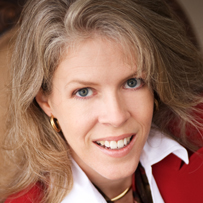By Carrie Perrien Smith
 We just finished wrapping up reviewing our finances and taxes.
We just finished wrapping up reviewing our finances and taxes.
A big part of that is our charitable giving. I was thrilled we were able to give a nice sum of money.
I reflected on the early days of our charitable giving and what I’d learned. I thought I’d pass that along in my Empty Nexter blog.
Once we finally make it to our 40s, 50s, and 60s, we reflect on what we’ve learned and the legacy we’ll leave. We’ve raised children, built careers, and acquired some assets. This often allows us the opportunity to ramp up our effort to give more of our time and money.
We’ve volunteered at our children’s schools, community events, and company fund-raisers. It wasn’t always easy, but we gave what we could. Now we have a little more to give.
How Much to Give?
When my husband and I were working toward become debt-free fifteen years ago, we set a charitable giving goal. It was God’s money and we took seriously the responsibility for releasing it into the community. It took several years to work up to it, but we now give ten percent pre-tax on our income. We also donate items and volunteer a considerable amount of time in our community.
I am convinced that we would never have been able to do that if we hadn’t become debt free. As we paid off our debt, we upped our giving a little more.
Giving Strategically
Determining how you will give is a personal choice. Some of us have more money than time or vice versa. That shifts with each season of life. There is no one-size-fits-all strategy. Giving strategically means planning what, when, and how you will give.
You can give however your time or budget allows but as I’ve learned over the years, having some goals, guidelines, and plans helps. It allows you to help the community in the most efficient, satisfying way possible without burning yourself out.
I’ve learned that I need a strategy for my volunteer time. I try to volunteer in activities where the outlay of time will benefit more than one cause. I also try to volunteer in ways that allow me to use skills where I’m most effective and efficient or develop skills that I can use to build my resume.
We try to set aside our “first fruits” like the Bible suggests. It makes perfect sense to tithe it out before you have a chance to spend it. When I get busy and behind on our charitable giving, it becomes a chore. I end up a huge task to give it away at the end of the calendar year when there are so many other things to do. It is much better to have a plan to give throughout the year.
Three Questions to Answer When Planning Where You Will Give Time or Money:
What are my favorite causes?
What or who do you feel most passionately about. Did you grow up in foster care? Do you want to help homeless people or animals? Do you want to help entrepreneurs improve their chance of success? In northwest Arkansas where I live, two counties are home to half the state’s non-profits. Now this is the Bible belt and a significant number are churches, but that is still a plentiful supply of choices. Be choosy. When you are passionate about who your cause, you’ll find yourself giving your time more joyously.
How can I help them?
When I first began to volunteer in the community, I didn’t have a particular focus. Some were activities my workplace was involved in. We raised money all year and then shopped for Christmas presents for needy children. I baked cookies for school bake sales. I even volunteered as a band booster president. I eventually ran large charity events. When you want to volunteer time, choose something you enjoy.
What do I want to give?
Giving money is easy and needed by every organization. My policy for much of the last ten years has been that I would give time or money. I have rarely done both and my time is probably much more valuable.
If you want to volunteer, consider what you like to do. Do you like to plan events? Is asking for money or donations your thing? Do you like to build or repair things? Do you like to work with people or alone?
When you give time, do something that is highly valuable for that organization that perhaps very few people can do. And for heaven’s sake, if the only task they have for you is something you would hate doing, turn it down. You will be a prisoner and may not even complete the task.
Deciding Where to Give
Some people get really wrapped up in how well the organization uses their financial or volunteer resources or whether the recipients are grateful. I subscribe to this school of thought: Love them all and let God sort them out.
I do my homework too. I check out national organizations on www.give.org. It is the Better Business Bureau website for national charities.
In recent years, we have increased the amount we give locally and give much less to national organizations. To check out local organizations, ask them to put you on their e-mail or newsletter list. Attend an event, volunteer to help with a day-of-event activity, tour their facility, or meet with the executive director.
Local non-profits are small organizations where the volunteers and donors are the lifeblood of their existence. I’ve become good friends with many executive directors, and it makes me feel good to support their work. If in doubt, I start with a small donation and watch them for awhile.
As our ability to give grew, we began to prioritize our funds based on how we felt led to give. Here is the guide I currently use. Level 1 is the highest level of giving.
- Level 1: Hunger and education (includes our grandson’s college savings fund)
- Level 2: Church, homelessness, and abuse (human and animal)
- Level 3: Local and national service organizations, missions, and individuals or families with an acute need (house fire, serious illness)
- Level 4: National causes we support on a small scale
We choose to spread our charity funds around in smaller portions, but some donors give most of their funds to just a few or even one organization. Larger donations can allow the donor to make a larger impact.
Non-profit Versus Politics or Family
It is a huge help with your tax burden to give to registered 501(C)3 charities. I do carefully consider where we give. However, this is God’s money and we need to use it where He’d want us to. That means I may not always give money to a tax-deductible cause. I may buy school supplies with it for a needy family or cook a few meals for a friend with cancer. We also put some of our charity money into an educational fund for our grandson.
We have done some fun things in the past like tying money to the handle on a gas nozzle at the convenience store in the poorer part of town, paid off Christmas layaways, and given secret gifts for people who needed a lift. Those aren’t tax deductible and we don’t always know who it helped. Make no mistake though, we had fun planning how we were going to surprise someone. Full hearts and memories made while sneaking around will trump tax deductions.
We give to some political causes too. We support candidates and organizations that will support missions and causes we believe in. Political donations are not tax deductible either. Sometimes you have to place more emphasis on the greater good your money will do than on the tax deduction.
Just Do It
Whatever you decide to do, do it with all your heart and give a little more than you think you can afford. What you have means so much to those who need your generous gift of time and money.
 Carrie Perrien Smith is mama to Darcie and a pack of black dogs (Jazmin, Midgieboy, and Chloe — in pack order), grandma to Robert, wife to world-traveler and Walmart-blue-bleeding Tom, daughter to Wayne and Phyllis, speaker bureau and publishing company owner, Business: Engaged! small business radio show host, community activist, singer in a party band called Paper Jam, and home improvement enthusiast. Follow her on Twitter @soarwitheagles or contact her at carrie@soarhigher.com.
Carrie Perrien Smith is mama to Darcie and a pack of black dogs (Jazmin, Midgieboy, and Chloe — in pack order), grandma to Robert, wife to world-traveler and Walmart-blue-bleeding Tom, daughter to Wayne and Phyllis, speaker bureau and publishing company owner, Business: Engaged! small business radio show host, community activist, singer in a party band called Paper Jam, and home improvement enthusiast. Follow her on Twitter @soarwitheagles or contact her at carrie@soarhigher.com.





